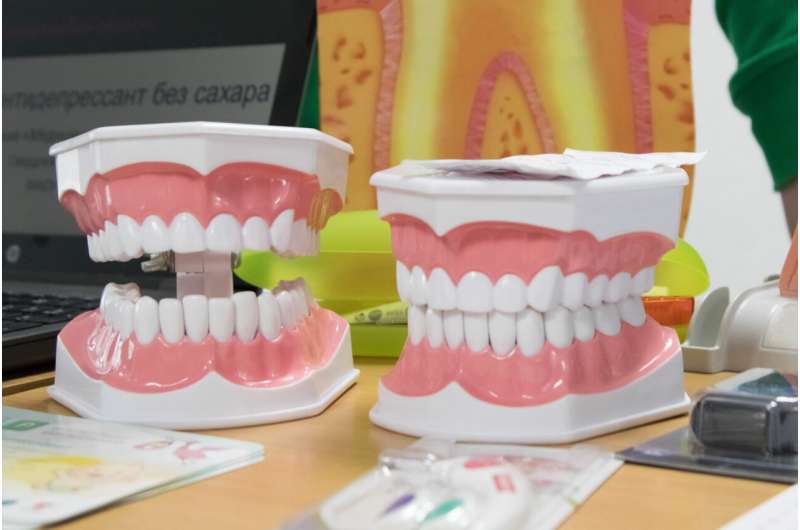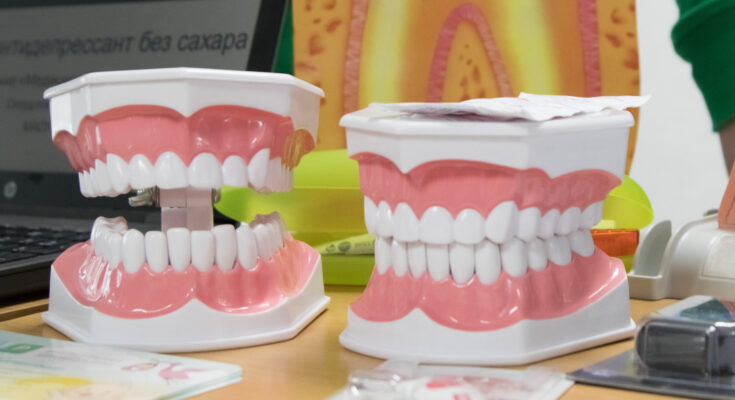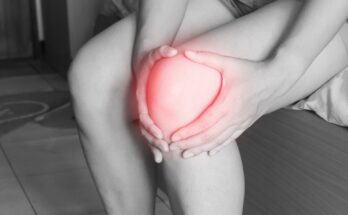
Scientists have perfected hydroxyapatite, a material for mineralizing bones and teeth. By adding a complex of amino acids to hydroxyapatite, they were able to form a dental coating that replicates the composition and microstructure of natural enamel. Improved composition of the material repeats the features of the surface of the tooth at the molecular and structural level, and in terms of strength surpasses the natural tissue. The new method of dental restoration can be used to reduce the sensitivity of teeth in case of abrasion of enamel or to restore it after erosion or improper diet. The study and experimental results are published in Results in Engineering.
“Tooth enamel has a protective function, but unfortunately, its integrity can be destroyed by, for example, abrasion, erosion or microfractures. If the surface of the tissue is not repaired in time, the enamel lesion will affect the dentin and then the pulp of the tooth. Therefore, it is necessary to restore the enamel surface to a healthy level or build up additional layers on the surface if it has become very thin. We have created a biomimetic (i.e., mimicking natural) mineralized layer whose nanocrystals replicate the ordering of apatite nanocrystals of tooth enamel. We also found out that the designed layer of hydroxyapatite has increased nanohardness that exceeds that of native enamel,” says Pavel Seredin, Head of the Department of Solid State Physics and Nanostructures at Voronezh State University.
Hydroxyapatite is a compound that is a major component of human bones and teeth. Scientists selected a complex of polyfunctional organic and polar amino acids, including, for example, lysine, arginine, and histidine, which are important for the formation and repair of bone and muscle structures.
The chosen amino acids made it possible to obtain hydroxyapatite, which is morphologically completely similar to apatite (the main component of tissues) of dental enamel. The researchers also described the conditions of the environment in which the processes of binding of hydroxyapatite to the dental tissue should occur. Only if these conditions are met it is possible to fully reproduce the structure of natural enamel.
“Traditionally in dentistry, composite restorative materials are used in enamel restoration. To increase the bonding efficiency of enamel and composite, the restoration technique involves acid etching of the enamel beforehand. The etching products left behind may not always have a positive effect on the bonding of enamel and synthetic materials. To reproduce the enamel layers with biomimetic techniques, we neutralized the media and removed the etching products using calcium alkali. In this way we improved the binding of the new hydroxyapatite layers,” explains Seredin.
The formation of a mineralized layer with properties resembling those of natural hard tissue was confirmed by field emission electron and atomic force microscopy as well as by chemical imaging of surface areas using Raman microspectroscopy. The study was conducted on healthy teeth to eliminate the influence of extraneous factors on the resulting layer and to be able to compare the results with healthy teeth. Next, the researchers will tackle the challenge of repairing larger defects, which can be of varying nature from the initial stages of caries to cracks and volumetric fractures.
Pavel Seredin et al, Engineering of biomimetic mineralized layer formed on the surface of natural dental enamel, Results in Engineering (2022). DOI: 10.1016/j.rineng.2022.100583
Citation:
Improved mineralized material can restore tooth enamel (2022, September 16)
retrieved 18 September 2022
from https://medicalxpress.com/news/2022-09-mineralized-material-tooth-enamel.html
This document is subject to copyright. Apart from any fair dealing for the purpose of private study or research, no
part may be reproduced without the written permission. The content is provided for information purposes only.
Source link




